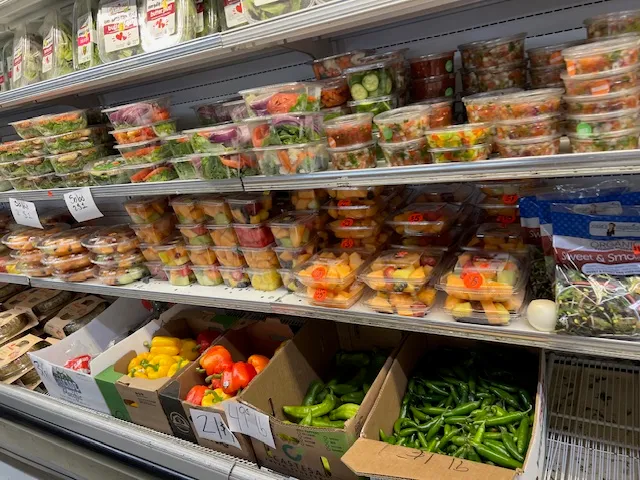Table of Contents
Vegan Food: A Comprehensive Guide to Its Rise, Nutrition, and Global Impact
Introduction
Veganism, once a niche lifestyle, has surged into mainstream consciousness, driven by ethics, environmental concerns, and health aspirations. This article explores the multifaceted world of vegan food, examining its nutritional profile, cultural acceptance, economic viability, and culinary creativity that transcends traditional dietary boundaries.
Value Proposition of Veganism
- Ethical Foundations:
- Avoids animal exploitation, aligning with cruelty-free values.
- Rejects industrial farming practices linked to animal welfare issues.
- Environmental Impact:
- Lower Carbon Footprint: Plant-based diets generate 50% fewer greenhouse gases than meat-centric diets.
- Resource Efficiency: Requires less water and land compared to livestock farming.
- Health Benefits:
- Linked to reduced risks of heart disease, hypertension, and type 2 diabetes.
- Rich in fiber, antioxidants, and phytonutrients.
- Market Growth:
- The Vegan Food market is expected to reach $57.6 billion by 2032, with a CAGR of 11.2% from 2024 to 2032, fueled by Gen Z and millennials.
https://worldanimalfoundation.org/advocate/how-many-vegans-are-in-the-world/
- The Vegan Food market is expected to reach $57.6 billion by 2032, with a CAGR of 11.2% from 2024 to 2032, fueled by Gen Z and millennials.
Global Acceptance & Cultural Shifts
- Leading Markets:
- Europe: UK and Germany lead in vegan product innovation and consumption.
- North America: U.S. vegan population grew by 600% (2014–2023).
- Asia: Israel’s vegan hub status; Japan and India embrace plant-based traditions (e.g., Buddhist cuisine).
- Cultural Fusion:
- Middle Eastern falafel, Ethiopian injera with lentil stew, and Mexican bean tacos highlight naturally vegan dishes.
- Fast-food chains (McDonald’s, KFC) and fine-dining restaurants now offer vegan menus.
Nutrition: Benefits & Considerations
- Pros:
- High in vitamins C, E, and folate; low in saturated fats.
- Supports gut health through fiber-rich legumes, grains, and vegetables.
- Cons:
- Potential Deficiencies: Vitamin B12, iron, calcium, omega-3s (addressed via fortified foods/supplements).
- Antinutrients: Phytates in legumes/grains may inhibit mineral absorption (mitigated by soaking/fermenting).
Major Followers & Advocates
- Celebrities: Joaquin Phoenix, Natalie Portman, and Lewis Hamilton promote vegan ethics.
- Athletes: Tennis star Venus Williams and NFL’s Tom Brady credit plant-based diets for peak performance.
- Organizations: PETA, Vegan Society, and ProVeg drive awareness and policy changes.
Vegan Products & Iconic Dishes
- Plant-Based Alternatives:
- Meat Substitutes: Beyond Burger, Impossible Sausage.
- Dairy-Free: Oatly milk, Miyoko’s vegan cheese, Coconut Collaborative yogurt.
- Global Dishes:
- Mediterranean: Hummus, tabbouleh, and stuffed grape leaves.
- Asian: Thai green curry with tofu, Vietnamese phở chay (vegetarian pho).
- Comfort Food: Vegan mac ‘n’ cheese, jackfruit “pulled pork” sandwiches.
Quick Recipes for Everyday Meals
- Chickpea Stir-Fry:
- Sauté chickpeas, bell peppers, and spinach in soy sauce + sesame oil. Serve over quinoa.
- Avocado-Lentil Wrap:
- Mash avocado, mix with cooked lentils, and wrap in a whole-grain tortilla with shredded carrots.
- 15-Minute Peanut Noodles:
- Toss rice noodles with peanut butter, lime juice, sriracha, and chopped veggies.
Decadent Vegan Desserts
- Chocolate Avocado Mousse: Blend avocados, cocoa powder, maple syrup, and almond milk.
- Vegan Cheesecake: Cashews, coconut cream, and dates for the base; top with berry compote.
- Aquafaba Meringues: Whip chickpea brine with sugar and bake until crisp.
Key Ingredients in Vegan Cooking
- Protein Sources: Lentils, tempeh, seitan, and hemp seeds.
- Binding Agents: Flax eggs (ground flax + water), chia seeds.
- Umami Boosters: Nutritional yeast, miso paste, tamari.
- Dairy Alternatives: Almond milk, cashew cream, coconut yogurt.
Ready-to-Eat Vegan Producers
- Pioneers: Beyond Meat, Impossible Foods, and Oatly dominate retail and foodservice.
- Convenience Brands: Amy’s Kitchen, Sweet Earth Foods (Nestlé), and Tofurky.
- Global Players: India’s GoodDot, Brazil’s Fazenda Futuro.
Return on Investment (ROI) in Vegan Ventures
- Market Potential: Plant-based meat sales grew 45% in 2020–2022, outpacing traditional meat.
- Challenges:
- High R&D costs for realistic meat substitutes.
- Consumer education to combat “processed” perceptions.
- Success Stories: Oatly’s 2021 IPO valued at $10 billion; Beyond Meat’s partnerships with McDonald’s and PepsiCo.
Sustainability & Future Trends
- Circular Economy: Upcycling food waste into vegan products (e.g., ReGrained’s spent grain snacks).
- Lab-Grown Innovations: Cultured meat and precision-fermented proteins (e.g., Perfect Day’s animal-free dairy).
- Climate Resilience: Drought-resistant crops like sorghum and millet gain traction.
Conclusion
Vegan food transcends dietary choice—it’s a movement reshaping food systems, economies, and ecosystems. As innovation bridges taste and ethics, veganism offers a blueprint for a sustainable, compassionate future. Whether through a homemade lentil stew or a lab-grown burger, its impact is undeniable, proving that what’s good for the planet can also delight the palate.
From farm to fork, veganism’s evolution mirrors humanity’s quest for harmony with nature. As kitchens worldwide embrace plants, the message is clear: The future of food is green, diverse, and irresistibly delicious.





